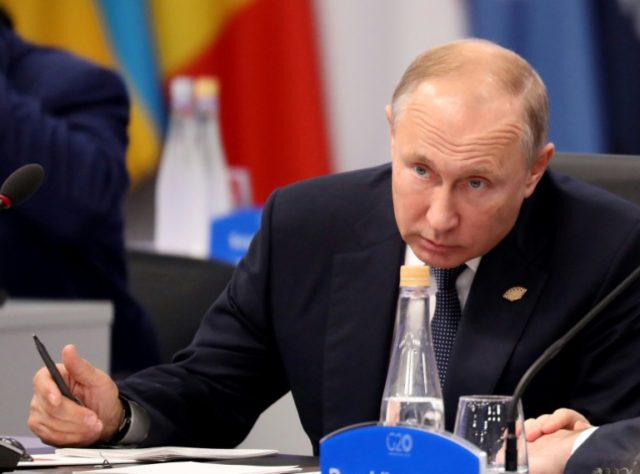A U.S. military withdrawal from Syria would fulfill a significant goal of Iran, Russia, and their ally Syrian dictator Bashar al-Assad, as well as benefit Turkey, which has repeatedly urged the United States to stop lending support to Syrian Kurdish militiamen fighting the Islamic State (ISIS/ISIL).
The Syrian conflict has drawn in troops from the United States, pro-Syrian opposition Turkey, and Iran and Russia.
To the dismay of the United States, Tehran-allied militias and Russian troops have kept Assad in power. This week, Turkey indicated it is open to working with Assad despite years of insisting that Turkey’s sole role in the country was to overthrow him. The United States has long opposed the Assad regime, but Russia and Iran continue to support the dictator.
Along with Syria and Iran, Russian President Vladimir Putin has long been pushing for the United States to leave Syria.
In early October, the Kremlin leader said, “We should pursue a goal that there would be no foreign forces, [the forces] of third states in Syria at all.”
A U.S. withdrawal would give the Russian strongman what he wants.
As Al Jazeera acknowledged in October, pulling out American forces from Syria would be a boon for Russia given that the Tehran and Kremlin-backed Assad regime needs the territory held by the U.S.-allied Kurds to survive.
In an editorial, Al Jazeera explained:
The [Kurdish]-controlled area contains 90 percent of Syria’s oil and gas reserves, including al-Omar, its largest oil field, as well as most of its water resources, major dams, and power plants. The northeast is also Syria’s breadbasket. As long as this area is out of its control, no government in Damascus can survive independently from foreign aid. … And the Russians, who are eager to reap the economic benefit of their military intervention in Syria, do not want to and cannot provide financial aid. Hence, the withdrawal of the US forces is essential for the survival of the Syrian regime and for the success of Russia’s Syrian venture.
According to the New York Times (NYT), Pentagon officials argued that pulling out of Syria would amount to a “betrayal” of the Kurdish allies who helped the U.S.-led coalition push ISIS out of Syria, particularly Raqqa, once considered the capital of the group’s former physical caliphate.
The Trump administration’s decision to pull out of Syria came after Turkish President Recep Tayyip Erdogan threatened a new offensive against the YPG. Absent an American presence, Turkey would be free to attack the U.S.-allied Syrian Kurds considered a terrorist group by Ankara.
The Times claimed:
Pentagon officials who had sought to talk the president out of the decision as late as Wednesday morning argued that such a move would betray Kurdish allies who have fought alongside American troops in Syria and who could find themselves under attack in a military offensive now threatened by Turkey. One American official said that Kurdish leaders were informed of the president’s decision on Wednesday morning.
America’s support for the Syrian Kurds has infuriated NATO member Turkey, which considers the American-allied People’s Protection Units (YPG) an extension of the Kurdistan Worker’s Party (PKK) terrorist group. Despite Turkey’s concerns, the U.S. believes the YPG is the most effective force to ensure ISIS’ lasting defeat in Syria.
American officials reportedly shared America’s plan to leave Syria with its Kurdish allies in northeastern Syria, namely the YPG.
Under Trump, the Pentagon wants to move away from the war on terror to focus on combatting “strategic competitors” like Russia and to a lesser extent Iran. A U.S. withdrawal from Syria where both Iran and Russia maintain a presence would diminish America’s ability to accomplish that goal.
America’s military presence in Syria is considered to be key to pushing against Iranian influence in Syria and across the Middle East as a whole, one of the Trump administration’s primary goals in the region.
Repeatedly citing the threat posed by the world’s state-sponsor of terror Iran and its proxies in Syria over the last few months, the Trump administration has expressed a desire to counter Iran’s influence over territory stretching from Tehran to the Mediterranean via Iraq and Syria.
In a move facilitated by the strategic territory it has conquered in Iraq and Syria, Iran has made its long-cherished goal of establishing a “Shiite crescent” sphere of influence a reality. The “Shiite crescent” refers to a single land route that connects territory held by Iranian allies — Hezbollah in Lebanon, the Assad regime in Syria, and the government of Iraq.
Still, the Trump administration is expected to pull the estimated 2,000 American troops out of Syria.
President Trump wrote on Twitter, “We have defeated ISIS in Syria, my only reason for being there during the Trump Presidency.” Nevertheless, DoD’s office of the inspector general (OIG) reported last month that the group remains a threat to Iraq and Syria.
“ISIS has lost all territory it held in Iraq and remained in control of only one percent of territory it once held in Syria,” the OIG noted. “However, the DoD and a report produced by a United Nations Security Council monitoring committee stated that an effective clandestine ISIS organization has moved underground and is acting as an insurgency in both countries.”
U.S.-led coalition and local forces have pushed ISIS into small pockets of territory in Syria, near the Iraqi border.
The Assad regime controls more territory in Syria than any other warring party, including the U.S.-backed Syrian Kurds.
The Pentagon is reportedly expected to keep the 5,200 troops already deployed in neighboring Iraq. Those troops are expected to have the ability to launch attacks into Syria, if necessary. The U.S. military believes a couple of thousand ISIS jihadis remain in Syria.

COMMENTS
Please let us know if you're having issues with commenting.